Nepal Trek 3: Annapurna Circuit
"Ugh, the roads! Annapurna isn't the same as it used to be." Variations on this statement had me questioning whether traveling out to Pokhara for this trek was worth it. But if roads are encroaching on what has been called one on the world's most classic hiking trails, then I better go now before it gets worse, I figured. Plus, I can't begrudge people in this region wanting to build roads and infrastructure. It's a bit precious to prioritize a nice walk for tourists over quality of life for locals.
The circuit is a horseshoe-shaped arc that starts east of Pokhara at Besi Sahar, travels counter-clockwise (advisably) through river valleys, climbs one high altitude pass at Thorung La, runs down through the Mustang Valley and around to the foothills west of Pokhara. Already acclimatized, I was able to cut out the rest days and I modified my start and end points, all of which made this trek faster than expected -- just nine days.
The Route
From Besi Sahar, I followed advice to take a Jeep up to Syange (1,211 meters/3,996 feet) and stayed my first night there. From Syange, my overnights were at Dharapani, Chame, Ngawal, Manag (two nights), Yak Kharka, Thorung Phedi, over the high pass of Thorung La (5,416 meters/17,872 feet) during the day and down to Jharkot, and then finishing in Jomson.
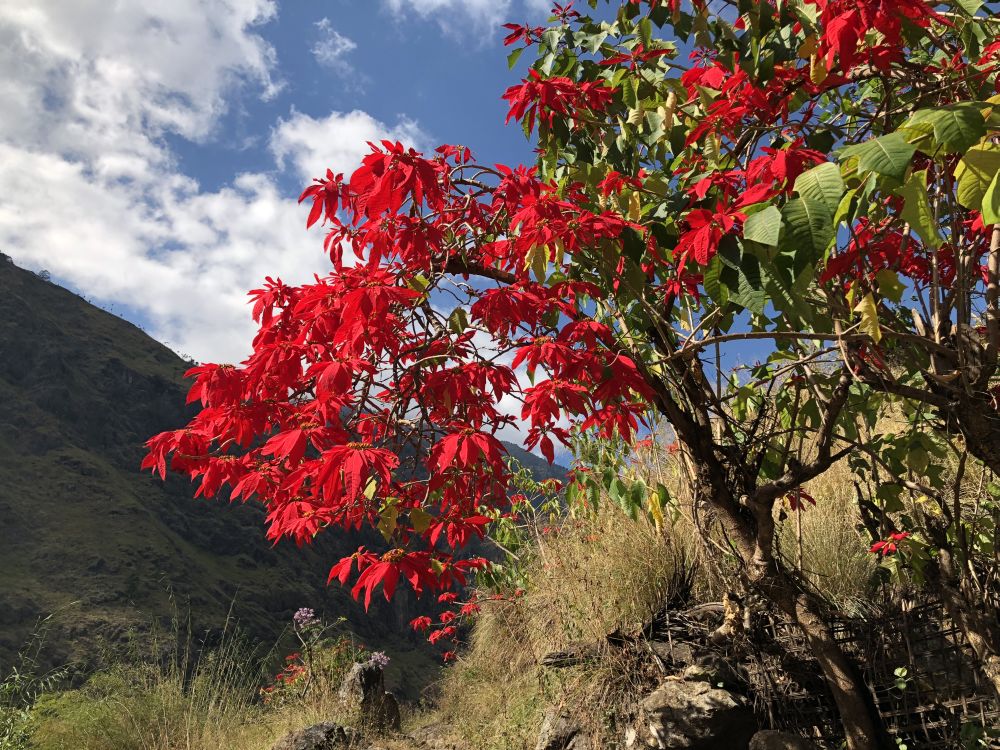

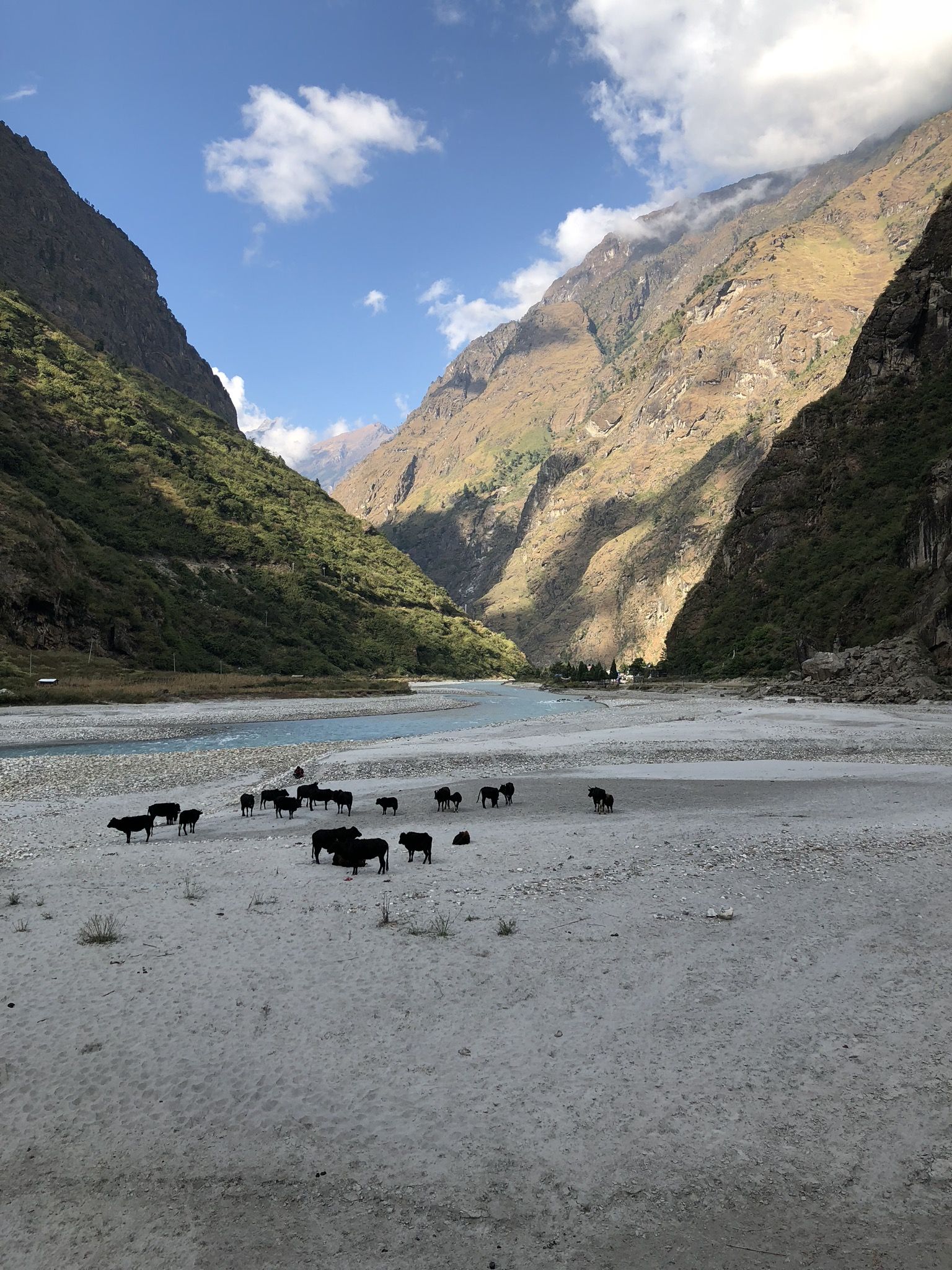
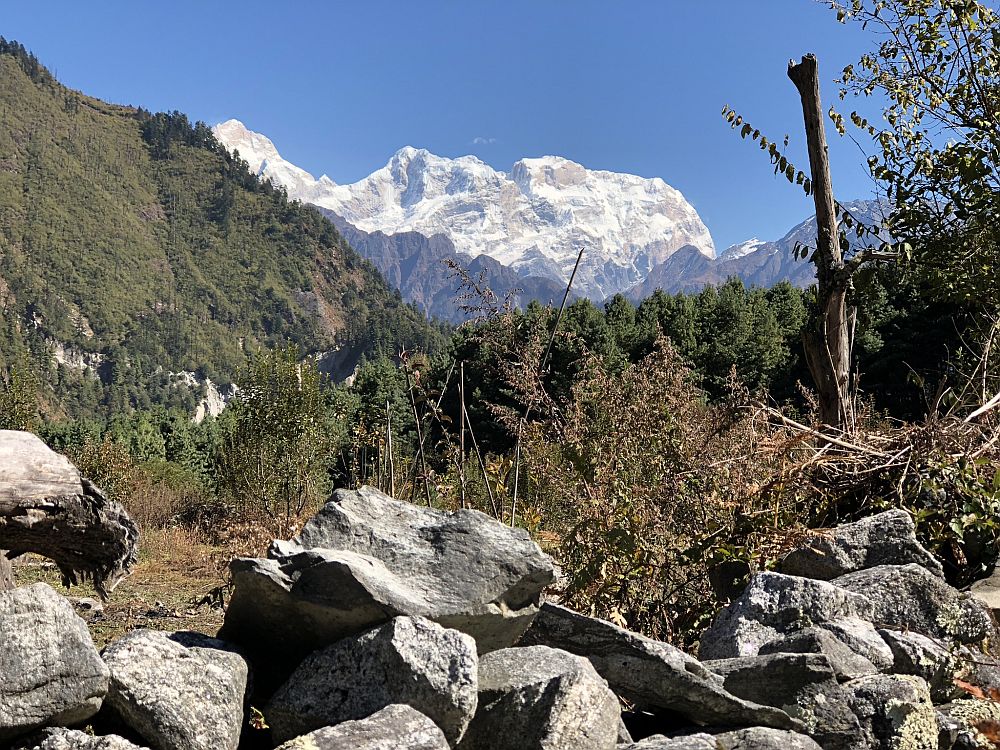
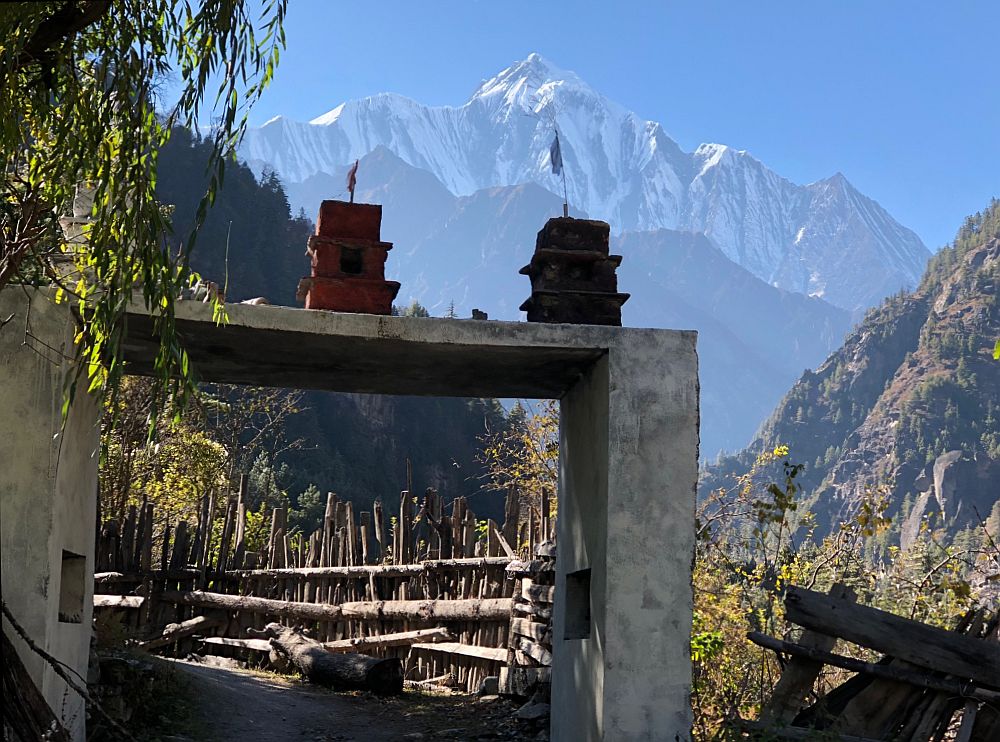
The trail traces the bank of the Marsyangdi Nadi river from Besi Sahar all the way to Manang. While the river is your constant companion, the shape and current of the water changes constantly, along with the vegetation. I was stunned to see wild poinsettias flowering on trees in the early, low elevation days of the trek; apparently I thought they only grew in plastic pots at grocery stores between Dec 10-25. After a few days the elevation barely scratched 2,000 meters (6,600 feet), making for warm days and fast trekking. The walk through an autumnal woods and a valley filled with apple trees near Timang made me nostalgic for Vermont. Just beyond there, nearing Chame, we emerged around a bend in the trail and the mass of Annapurna II was directly in sight. These are definitely not Vermont's Green Mountains!
This was the stretch of trail where I met Mathilde, and later Tavis, Florianne, Kinga, Mike, Adam and Selena, cheerful and easy trail companions all. We hiked together from below Chame to Upper Pisang, and then I continued solo that day to Ngawal, a long, satisfying day that finally put me at a respectable elevation, 3,660 meters/12,078 feet.
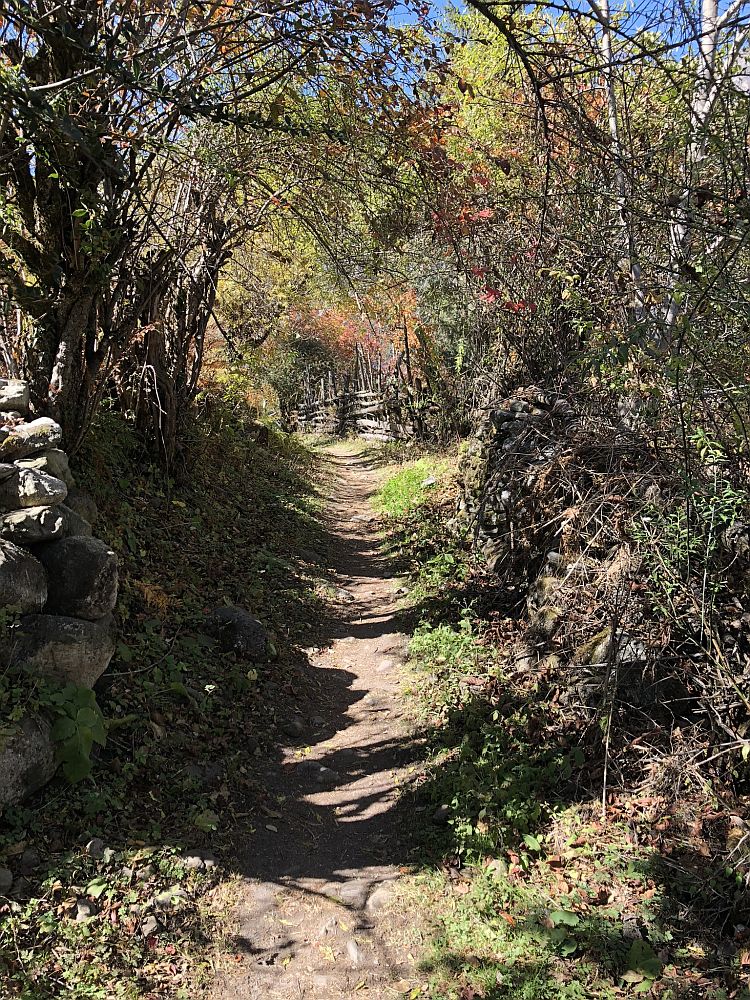
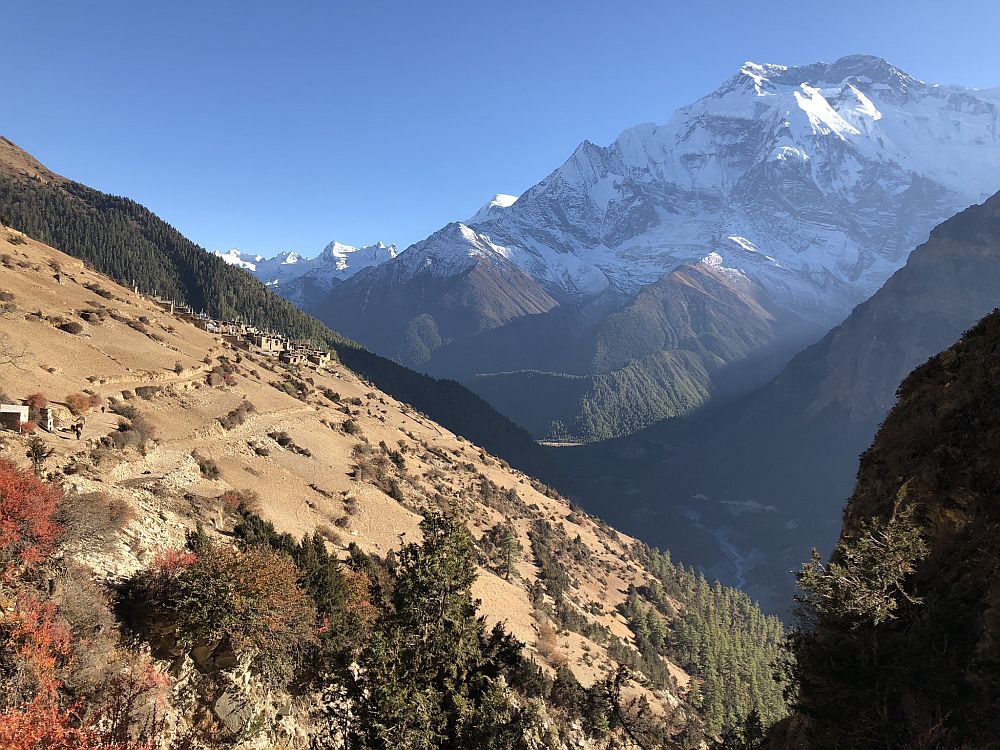
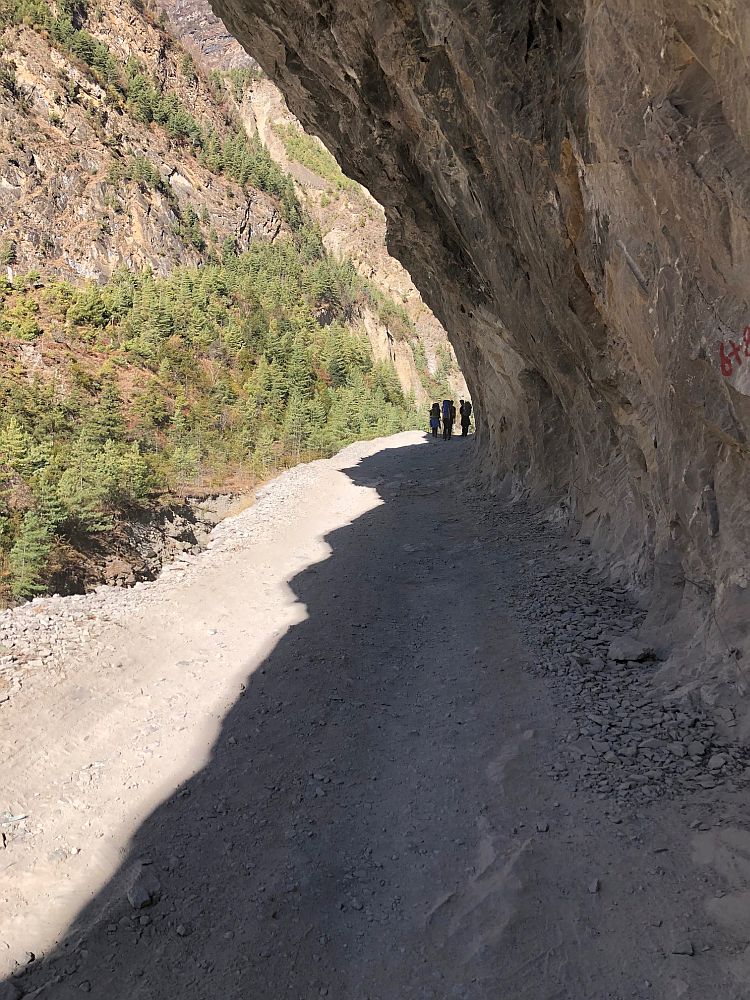
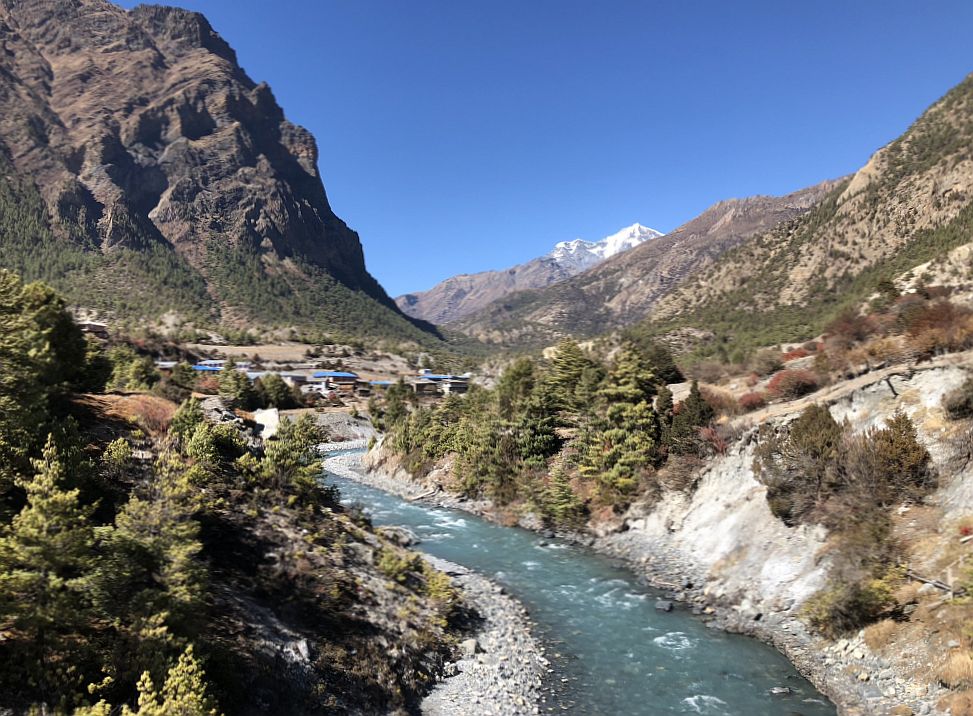
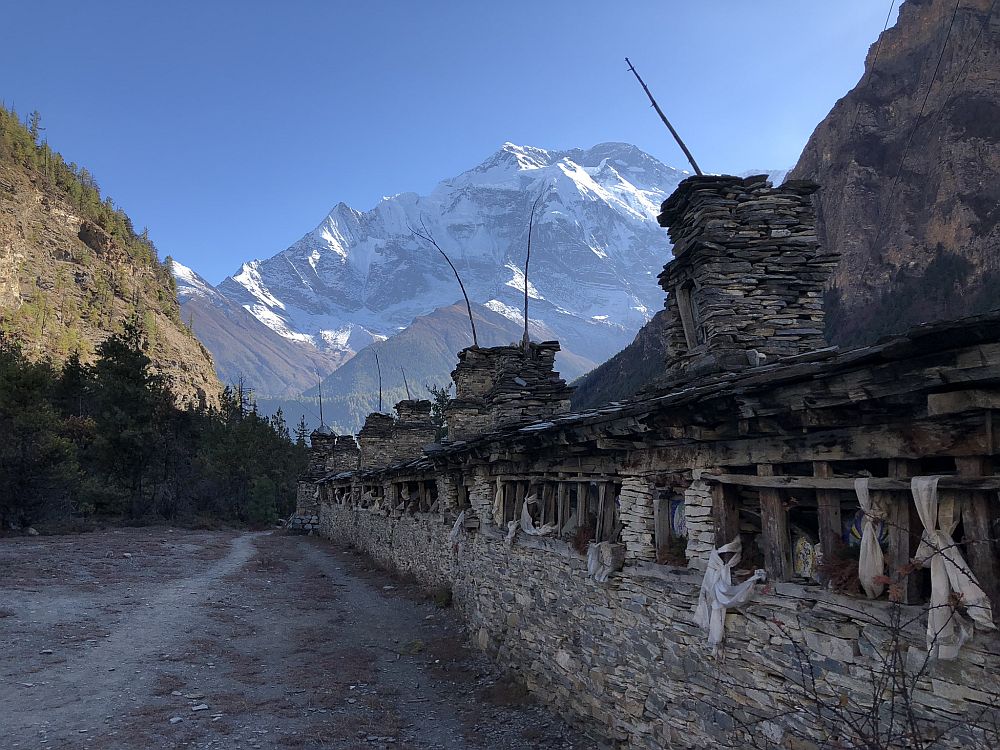
From Ngawal, I had an easy, short walk to Manang, the Namche of the Annapurnas. Here, they recommend you stay put to acclimatize for a few days, stock up on supplies and prepare for the high altitude that comes next. I stayed two nights so I could take in a movie (!), check out the political campaigning ahead of the parliamentary elections and do my laundry. I had my blood oxygen tested at the Himalayan Rescue Association and it was an impressive 92 percent, so I sped out of there and up to Yak Kharka after a day and half.
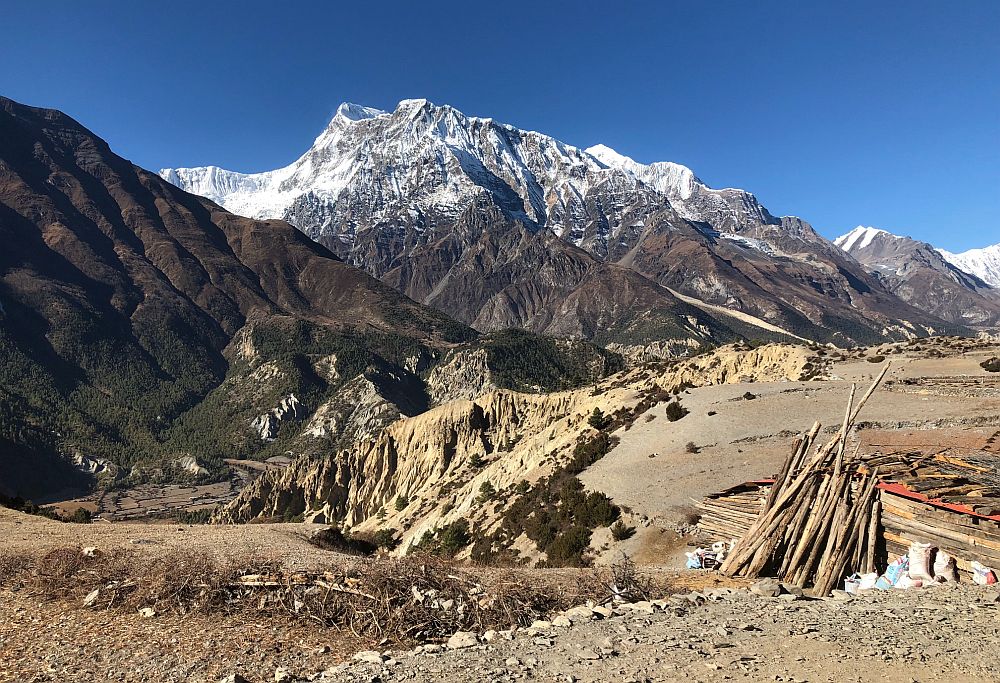
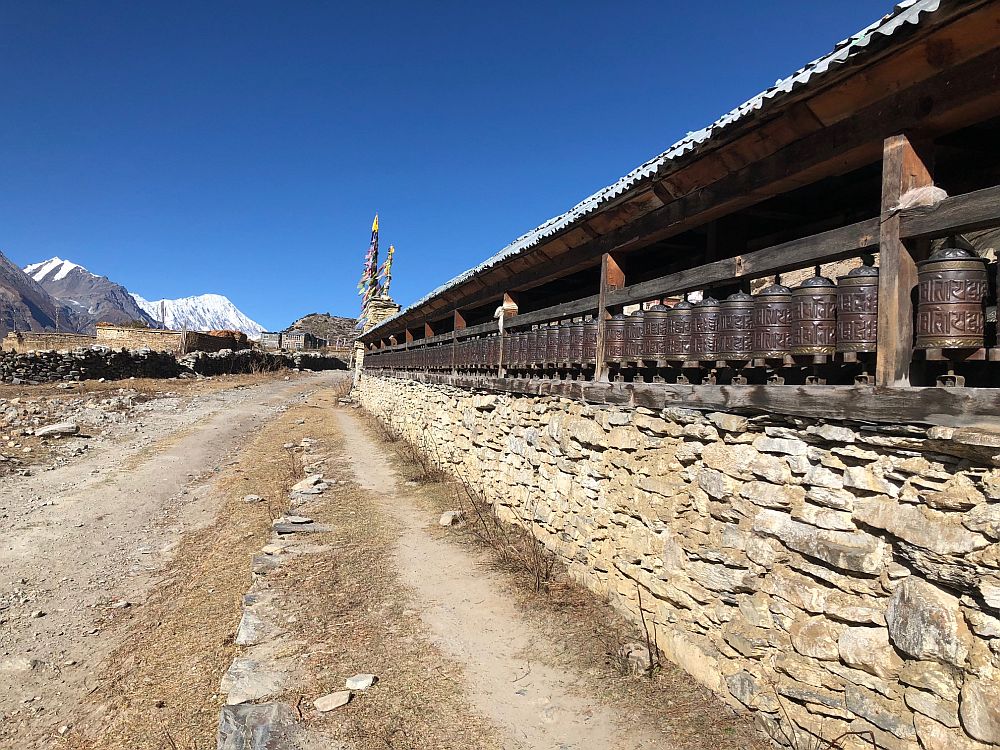

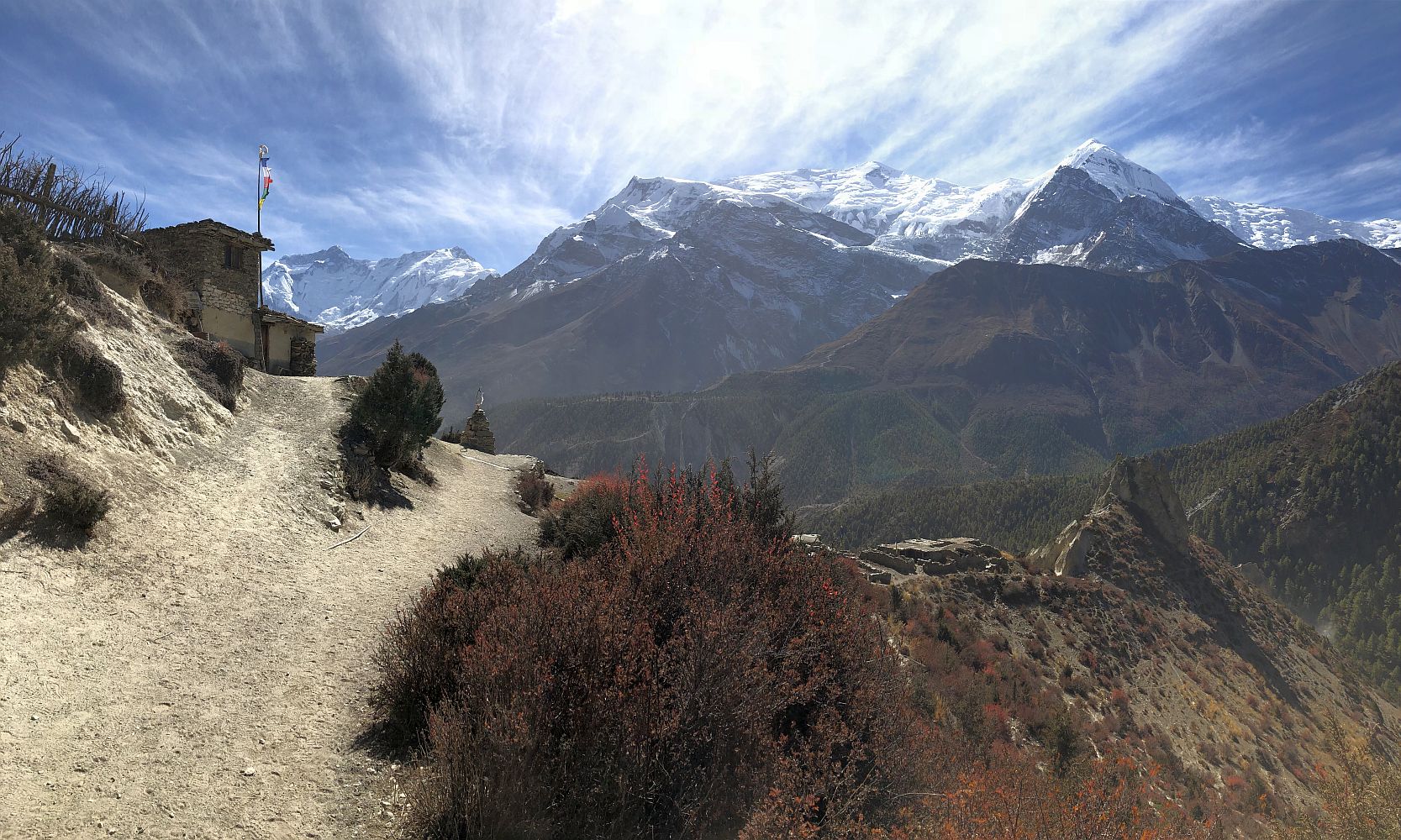
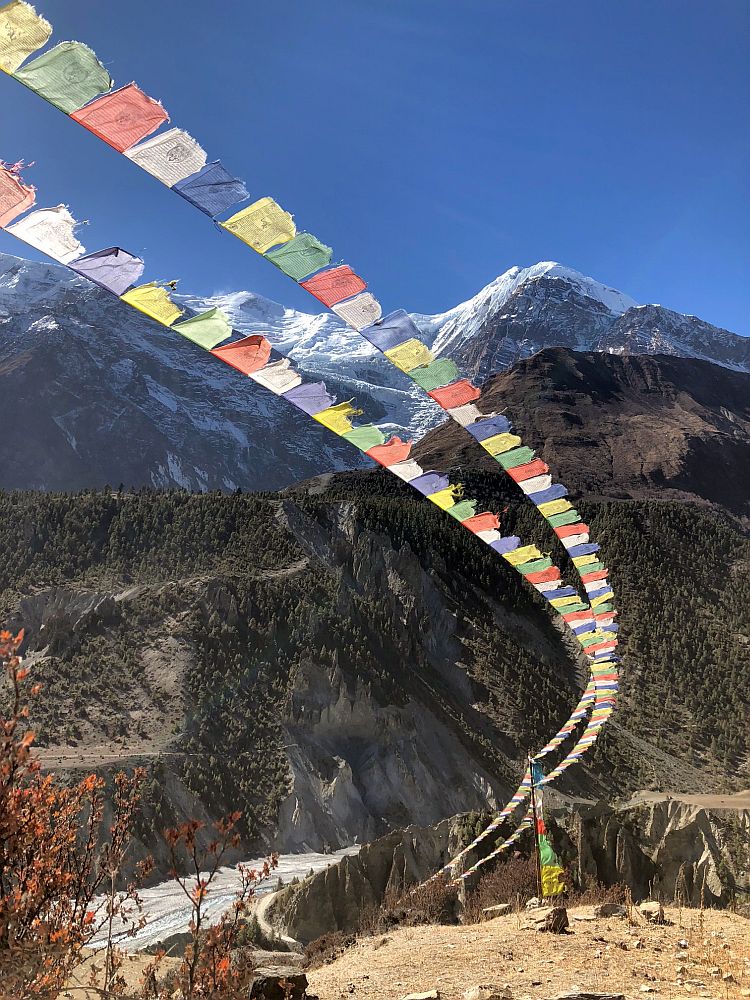

Manang is full of "video projection halls," a fun cottage industry in town that doesn't offer much else in the way of distraction. A Slovak couple and I caught the 5 p.m. showing of Seven Years In Tibet; the wooden benches had yak furs to keep us warm, and the projectionist lit the yak dung stove too. (Lighting the stove is the most expensive part of the operation for the projection hall.) Halfway through the film, a woman brought in popcorn and hot tea for us. Delightful!

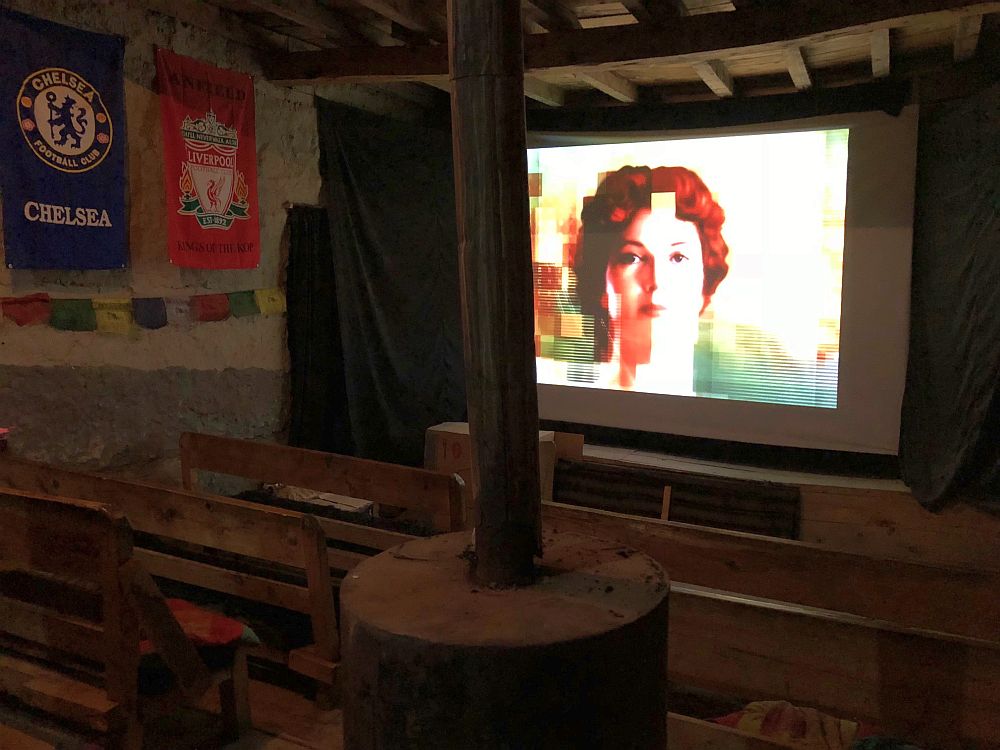
Above Manang, the landscape changes dramatically again and the trek starts to feel like a TREK. Vegetation disappears, the brown, barren mountains in the foreground are lit up with crisp, snow-covered peaks in the distance. Yaks meander down the trail, the dull but cheerful sound of their bells announcing their approach. Here the trail has turned north along the Thorung Kola and Kone Kola rivers, tiny threads of water at the bottom of impressively carved valleys.
Looking south down the Kone Kola river valley, the section of trail between Letdar and Thorung Phedi.
Thorung La is the high pass on this trek, and the options for accommodation just before making this ascent are few. Thorung Phedi is a cluster of noisy lodges, and further along is High Camp, essentially one noisy lodge. I lucked into the last room at small quiet lodge in Thorung Phedi, on the hill overlooking the rest of the guesthouses. A dozen of us huddled around the stove with cups of milk tea and compared notes on how early we planned to start the ascent.
In the pre-dawn morning, light, dry snowflakes floated in the dark air and I could see a dotted line of headlamps snaking up the mountain trail behind the guesthouse. Their 4 a.m. departure seemed pointlessly early and I waited till first light. I had the benefit of weeks of conditioning and acclimatization, and my climb up to the high pass was fairly easy and speedy. I had expected it might be, but it seemed unwise to presume too much at 17,800 feet.
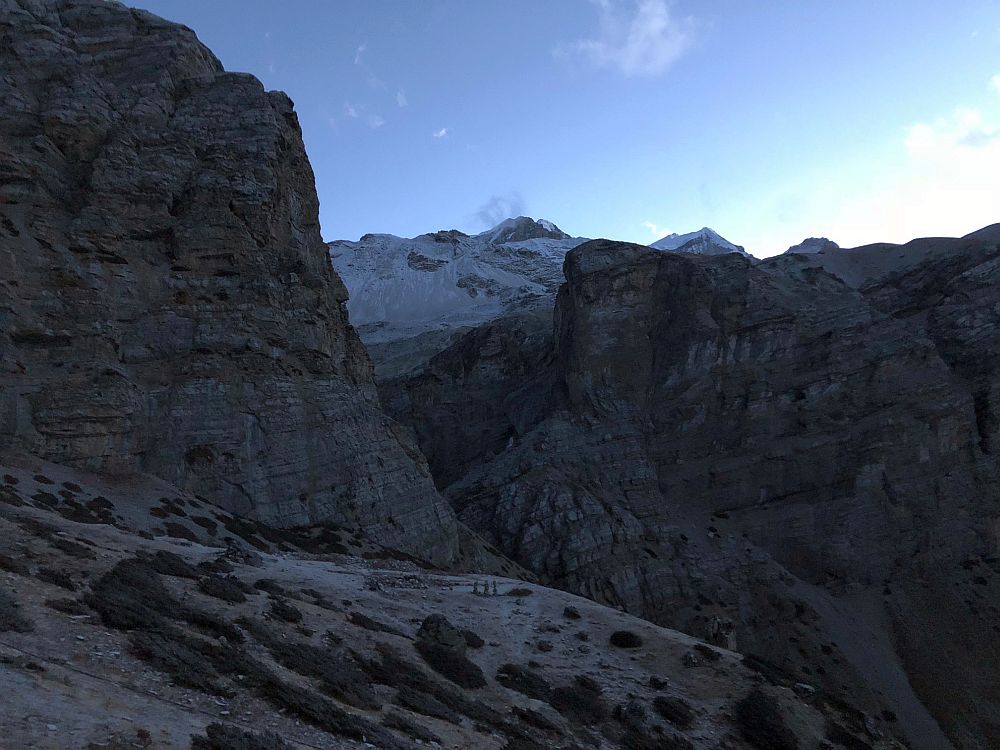
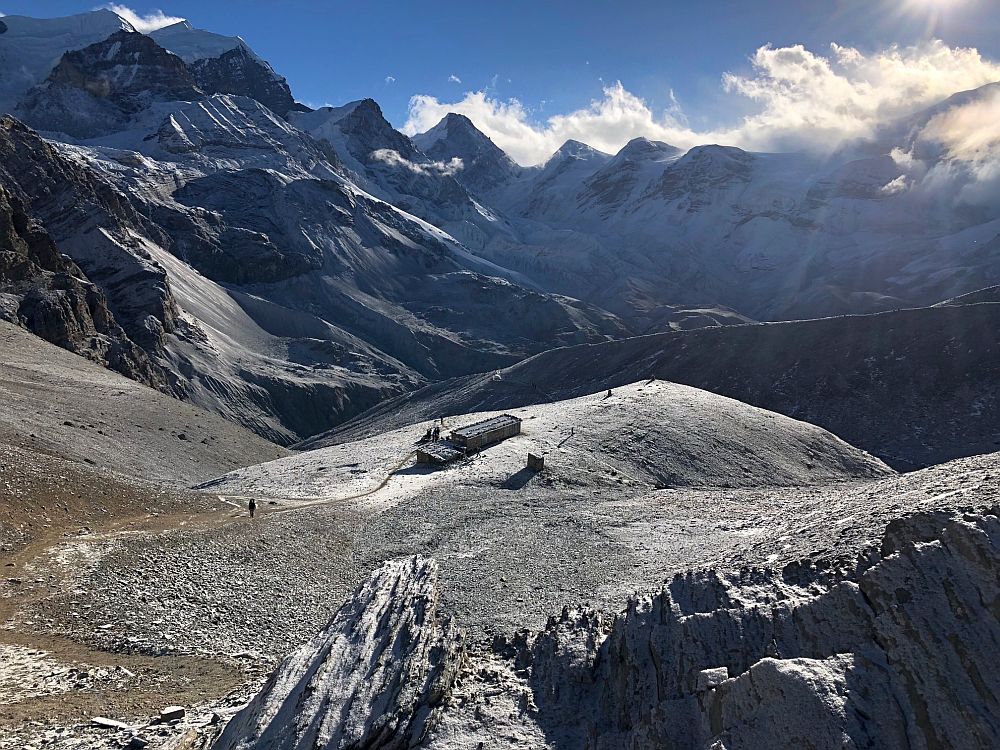

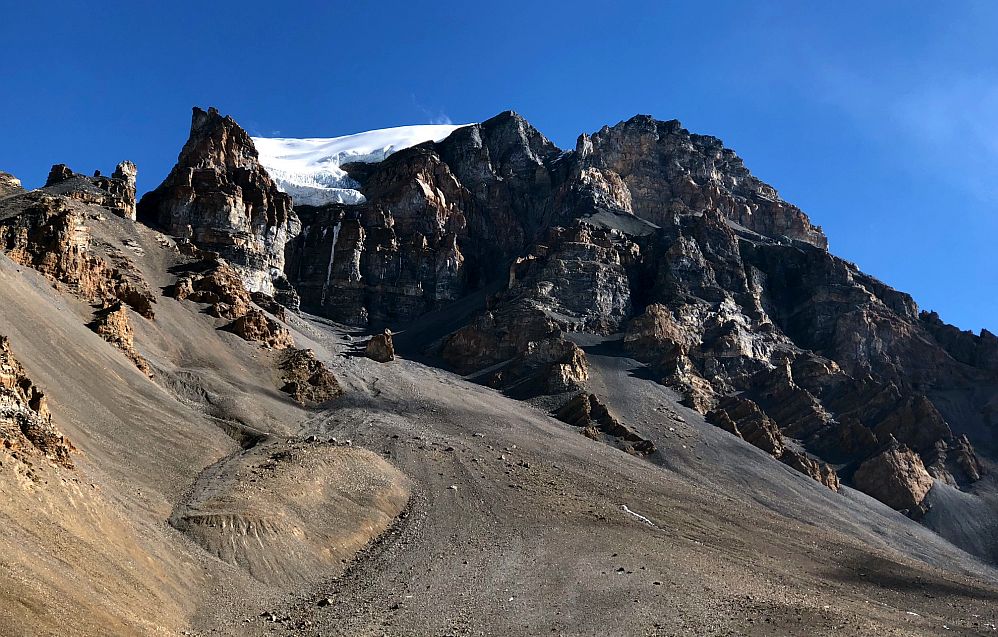
Maps describe this as "biggest" mountain pass in the world, I think because it's extremely broad and the flanks on both sides of the pass extend far out. In Three Passes, a sharp knife-edge defined each pass with steep ascent and decent on both sides. This was more of an enormous saddle.
At the top, the signpost is swaddled in bright prayer flags and swarmed with trekkers seeking a quick photo in the windy cold exposure of the pass. Joining the group of trekkers at the top, I heard a British voice calling my name: Stu! We had first met weeks ago on the hike from Jiri to Lukla, on the evening after Andy and I got lost in Bupsa. I had last seen Stu on Three Passes, the night before the first pass when he was expressing extreme dread that he was not cut out for this. And now here he was -- having finished Three Passes he kept going, and now we stood at the top of Thorung La! Stu offered me a celebratory sip of his beer (17,000 feet, 9:30 a.m., drinking a beer - this is definitely not the stressed out Stu I met in Chhukung!) and we toasted the chances of meeting up again precisely at this spot. Fantastic!
The 10 kilometer/6 mile decent toward Muktinath and Mustang Valley was long, barren and deceptively tricky. Along the way were bad weather shelters, the fierce blue of their tin sheaths providing a shot of color against the dun-hued landscape. A porter told me these were built after the disastrous 2014 trekking season when a snow storm stranded and killed 43 people on this section of trail. Even in good trekking weather like today, it's easy to see how few options for escape or natural shelter there are on this long, exposed slope; guidebooks everywhere are full warnings to check the weather conditions with reliable locals before attempting this section of trail.
Muktinath offers a celebratory oasis to trekkers coming down from the pass -- bars, hotels, restaurants, a LOT of white people. The vibe of partying backpackers who were a little too impressed with themselves was jarring after a long string of peaceful days in the mountains. I checked in quickly at the TIMS station and kept walking to the village of Jharkot, another half-hour down the road. A nice lodge with hot showers, and the company of a small group of French trekkers made for a good end to the hardest day of the trek. The sun dip below the mountain ridge, and herders brought cows in from the small nearby fields, their bells clanging and hooves clomping as they moved down the narrow stone alley next to our lodge. As we ate our dal bhat dinner, the lodge-owner lit a metal bucket of coals on fire and nudged it under the wooden table where we were eating. Defying the odds but clearly in line with the proprietor's expectations, the table did not catch on fire, and our feet and legs were toasty warm as the temperature dropped outside. Another item added to the list of "Things We Don't Do In America." (Or in France, I was assured.)
The next day was my last on this trek, ending in Jomson. I had debated how to use the time I had left in the region and realized I could either finish walking the low foothill sections of the Circuit Trek, or take a bus to Naya Pul and get in one more trek to Annapurna Base Camp. The hours walking to Jomsom proved to be the most annoying, and most filled with self-inflicted problems of any hours I would spend in the Himalaya, but they could not dull the satisfaction and joy of hiking in this region.
[Annapurna Circuit Trek: November 10-18, 2017]


